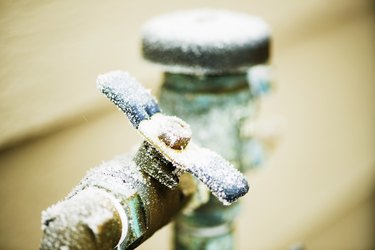Crucial Tips to Avoid Frozen Plumbing in Winter: Expert Insights
Crucial Tips to Avoid Frozen Plumbing in Winter: Expert Insights
Blog Article
We have unearthed the article relating to How To Avoid Freezing Pipes listed below on the web and concluded it made perfect sense to quickly share it with you on this site.

Cold weather can damage your pipes, especially by freezing pipelines. Here's just how to avoid it from occurring and what to do if it does.
Intro
As temperatures decrease, the threat of frozen pipelines rises, possibly resulting in pricey repairs and water damages. Understanding just how to stop icy pipes is essential for house owners in chilly environments.
Avoidance Tips
Protecting vulnerable pipelines
Wrap pipes in insulation sleeves or make use of heat tape to protect them from freezing temperatures. Concentrate on pipes in unheated or external locations of the home.
Heating methods
Maintain indoor rooms properly warmed, especially areas with plumbing. Open up cabinet doors to enable warm air to circulate around pipes under sinks.
Just how to recognize frozen pipes
Look for reduced water circulation from taps, uncommon smells or sounds from pipelines, and visible frost on subjected pipelines.
Long-Term Solutions
Architectural modifications
Think about rerouting pipes far from exterior walls or unheated areas. Include additional insulation to attics, cellars, and crawl spaces.
Upgrading insulation
Buy top notch insulation for pipes, attic rooms, and wall surfaces. Correct insulation aids maintain consistent temperatures and lowers the danger of frozen pipes.
Protecting Outside Plumbing
Garden pipes and exterior faucets
Separate and drain yard tubes prior to wintertime. Install frost-proof spigots or cover outside taps with protected caps.
Recognizing Icy Pipes
What creates pipelines to freeze?
Pipelines freeze when exposed to temperatures listed below 32 ° F (0 ° C) for expanded durations. As water inside the pipes freezes, it increases, putting pressure on the pipeline wall surfaces and potentially creating them to rupture.
Risks and damages
Icy pipelines can bring about water interruptions, residential property damages, and costly repair services. Burst pipes can flooding homes and trigger extensive structural damages.
Indications of Frozen Pipeline
Identifying frozen pipes early can stop them from breaking.
What to Do If Your Pipelines Freeze
Immediate activities to take
If you presume frozen pipes, maintain faucets open to eliminate stress as the ice thaws. Use a hairdryer or towels taken in warm water to thaw pipes slowly.
Final thought
Protecting against icy pipelines needs proactive measures and quick feedbacks. By recognizing the reasons, indicators, and preventive measures, homeowners can shield their pipes during cold weather.
6 Proven Ways to Prevent Frozen Pipes and Protect Your Home
Disconnect and Drain Garden Hoses
Before winter arrives, start by disconnecting your garden hoses and draining any remaining water. Close the shut-off valves that supply outdoor hose bibs and leave the outdoor faucet open to allow any residual water to drain. For extra protection, consider using faucet covers throughout the colder months. It’s also important to drain water from any sprinkler supply lines following the manufacturer’s directions.
Insulate Exposed Pipes
Insulating your pipes is an effective way to prevent freezing. Pipe insulation is readily available at home improvement stores and is relatively inexpensive. Pay close attention to pipes in unheated areas such as the attic, basement, crawl spaces, or garage. Apply foam insulation generously to create a buffer against the cold. You can also wrap your pipes in heat tape or thermostat-controlled heat cables for added warmth.
Seal Air Leaks
Inspect your home for any cracks or openings that could let in cold air. Seal any holes around the piping in interior or exterior walls, as well as the sill plates where your home rests on its foundation. Additionally, make sure to keep your garage door closed unless you’re entering or exiting. Leaving it open creates a significant air leak that can lead to frozen pipes.
Allow Warm Air Circulation
During cold snaps, it’s essential to allow warm air to circulate evenly throughout your home. Leave interior doors ajar to promote better airflow. Open kitchen and bathroom cabinets to help distribute heat consistently around the rooms. If you have small children or pets, be sure to remove any household chemicals or potentially harmful cleaners from open cabinets for safety.
Let Faucets Drip
A small trickle of water can make a big difference in preventing ice formation inside your pipes. When temperatures drop significantly, start a drip of water from all faucets served by exposed pipes. This continuous flow helps prevent the water from freezing. Additionally, running a few faucets slightly can relieve pressure inside the pipes, reducing the chances of a rupture if the water inside does freeze.
https://choateshvac.com/6-proven-ways-to-prevent-frozen-pipes-and-protect-your-home/

I'm very inquisitive about 6 Ways to Prevent Frozen Pipes and I really hope you enjoyed reading the entire entry. Sharing is good. You never know, you will be doing someone a favor. We love reading our article about How To Avoid Freezing Pipes.
Apply Now Report this page